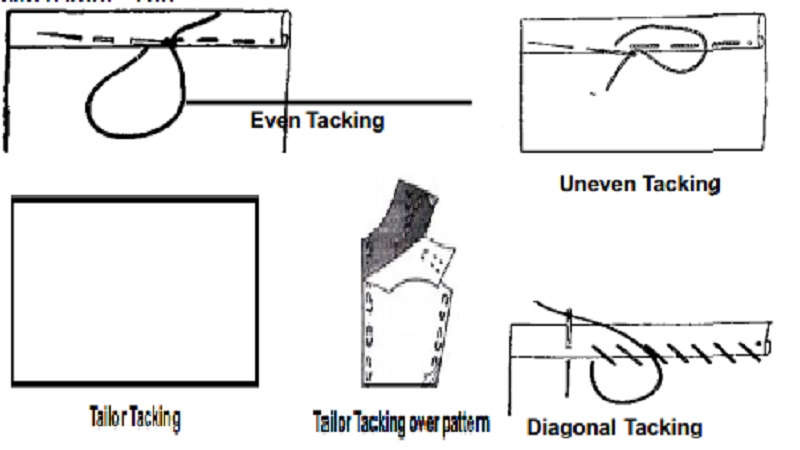Chapter: 11th 12th std standard Textiles And Dress Designing Cloth stitch Higher secondary school College practical steps methods Notes
Temporary stitches

TEMPORARY STITCHES:
Tacking or basting is a temporary stitch used for holding two or more layers of fabric together before a permanent stitch in made. Usually the stitch is worked from right to left, starting with a knot in a contrasting color thread, so that it can be easily removed. There are several types of tacking stitches, four of them are
1. Even tacking
2. Uneven tacking
3. Diagonal tacking
4. Tailor's tacking
1. Even Tacking :
Use a thin needle and start the stitch with a knot. The stitches are of equal length about �' on both sides of the material. Many number of longer stitches can be done at a time. This is used for tacking seams & other details which must be held securely.
2. Uneven Tacking:
In this, the stitches on the upper side is �' or at least twice that on the under side (� '). This stitches can be used for longer folds & seams. This is comparatively stronger than even tacking. Use this type of tacking as a guideline or where there is little or no strain.
3. Diagonal Tacking:
While attaching two or more layer of fabrics this type of stitch is made about � ' apart before making machine stitch.
Work stitches through the material at right angles to the fabric edge so that a diagonal or slanting stitch in made on the upper side and a vertical stitch is made on the under side.
4. Tailor's Tacking:
Start tacking using double thread of contrasting color, so that they can be easily seen. Tack through double layer of fabric along the seam lines using even stitches of �' length apart, leave them as loop without pulling it tight. After completing, raise the upper layer of fabric slightly and clip the thread between the layers. So that the thread tuft, will remain on both the layers of fabric and remain as a guide line. This is especially used for marking details between patterns such as dart markings and pleat markings.
Related Topics